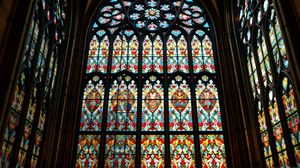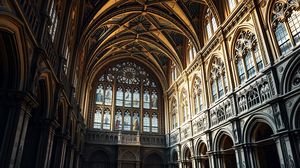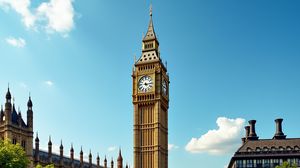
The Jewel Tower in Westminster is a fascinating historic site that dates back to the 14th century. Originally built between 1365 and 1366, it was constructed to store the personal treasure of King Edward III, a testament to its secure and sturdy design. Its name, however, is slightly misleading today as it no longer holds any jewels.
One of the intriguing aspects of the Jewel Tower is its survival through significant historical upheavals. It is one of only two buildings from the medieval Palace of Westminster to have survived the great fire of 1834, which makes it a remarkable relic of London's medieval history.
The architecture of the Jewel Tower is a remarkable example of medieval defensive design. Its robust construction and remains of the medieval moat illustrate the high level of security afforded to this tower, emphasizing its importance as a royal treasury.
The Jewel Tower's unique role extended beyond safeguarding treasures. In the 17th century, it was repurposed to house records of the House of Lords, showcasing its adaptability throughout centuries of British history.
Visitors to the Jewel Tower can explore fascinating exhibits that detail its varied past, including an exhibition run by English Heritage that provides insight into the medieval history of the Palace of Westminster and the changing uses of the Tower over time.
An intriguing and lesser-known feature of the Jewel Tower is its unusual three-storey layout, which is rare for buildings of its time. This quirky design offers a glimpse into the medieval construction techniques and innovations of its era.

Making the Most of Your Visit:
Take note of the Jewel Tower's original features as you enter. The medieval fireplace and the roof are exceptionally well-preserved, allowing you to imagine the life of the 14th-century royal treasurers who once worked there.
Look out for the ancient graffiti on the walls, left by craftsmen and visitors over the centuries. These markings add a personal, human touch to the history of this remarkable building and provide a rare glimpse into its past visitors.
Check out the display about the Palace of Westminster's history, which includes a particularly engaging model of the medieval palace. It's a great way to contextualize the Jewel Tower's place within the broader history of the area.
If you're an architecture enthusiast, take some time to appreciate the tower's thick stone walls and cross the bridge over the old moat. It's an excellent example of how defensive architecture was designed for both protection and status.
Don't miss the information on how flood prevention methods were employed; the Jewel Tower has a history of adapting to its environment, and understanding these adaptations gives valuable insight into the challenges faced by medieval London builders.

Visiting Times & Costs:
The Jewel Tower is open to the public and operates under the management of English Heritage. Its opening times can vary seasonally, so it is advisable to check in advance for the most accurate visiting hours. Typically, it is open from Wednesday to Sunday between 10:00 AM and 5:00 PM; however, these hours can change, especially during holidays and the winter season.
Admission fees apply for entry to the Jewel Tower. While members of English Heritage may have free access, non-member adult tickets typically cost around £5.30, with concessions available for seniors and students. Children have a reduced rate, and family tickets (covering two adults and up to three children) are available at a discounted price.
In terms of accessibility, the Jewel Tower has some limitations. Due to its historical architecture, the interior may pose challenges for wheelchair users and those with limited mobility, as there are steep stairs and narrow passageways. Assistance dogs are welcome, and there are accessible toilets on site.
Be sure to verify the latest information regarding opening times, ticket prices, and accessibility features before planning your visit, as these details are subject to change.

Address & Map:

Nearby:























